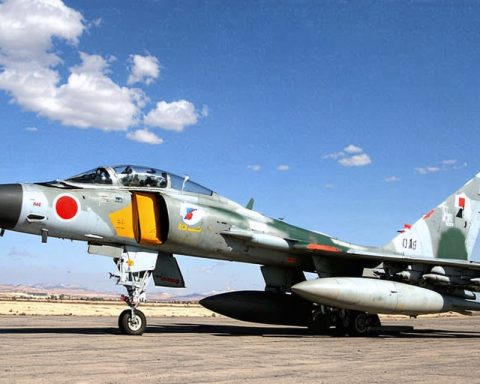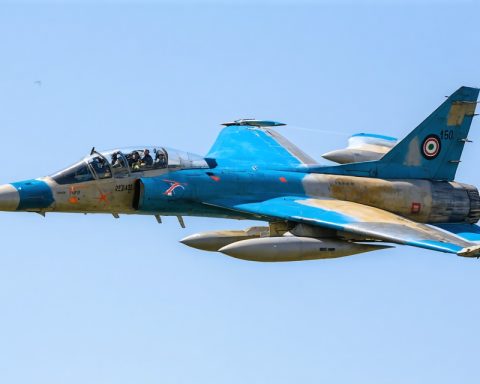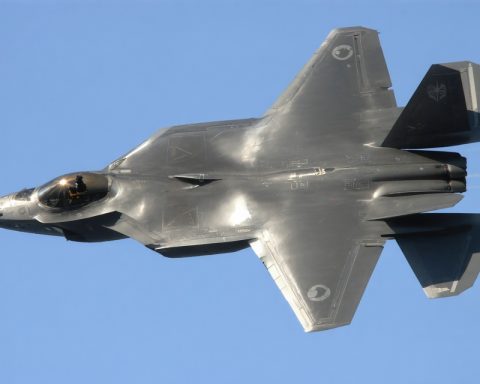The F-35, a fifth-generation fighter jet hailed as a marvel of modern engineering, is under scrutiny. A prominent watchdog organization has fervently criticized the rapid approval of its mass production, spotlighting significant safety and performance concerns.
According to sources, the Project On Government Oversight has raised alarms over the Pentagon’s decision to greenlight full-scale production of the F-35 despite lingering issues highlighted in recent evaluations. The organization argues that the March 2024 go-ahead for production contradicts serious flaws noted in a February report that focused on operational testing and evaluation.
The report, extensively detailed on the watchdog’s website, cites numerous deficiencies in the F-35 models concerning safety, reliability, weapon accuracy, and maintenance standards. These concerns have not gone unnoticed. Critics within the public domain express dissatisfaction with the hasty decision, especially urging the U.S. Congress to reconsider putting unfinished jets into active service.
These revelations follow the declassification of a Pentagon report that detailed the F-35’s complex testing history over six years. This document, linked to the Lockheed Martin Corp.’s flagship project, underscores pervasive challenges in serviceability, dependability, accuracy of weapon systems, and unresolved cybersecurity issues, painting a worrisome picture of America’s most expensive military acquisition to date.
Unveiling the F-35: The Battle Between Modern Engineering and Security Concerns
A Deep Dive into the F-35 Program’s Impact on Humanity and Technology
The F-35 fighter jet, often regarded as a breakthrough in defense technology, is at the center of an ongoing debate that touches upon multiple aspects of its development and future deployment. While the recent controversy revolves around the Pentagon’s push for full-scale production amid unresolved issues, the implications of the F-35 program extend beyond immediate safety concerns.
The Technological Marvel: What’s New?
Despite the criticism, it’s essential to recognize the cutting-edge advancements that the F-35 brings to the table. As a fifth-generation multirole fighter, it incorporates stealth technology, advanced avionics, and superior networking capabilities. This aircraft is designed to perform ground attack, aerial reconnaissance, and air defense missions, making it a versatile asset for military operations. Its ability to fuse information from various sensors and systems exemplifies a significant leap forward in combat preparedness and situational awareness.
Interesting Facts and Controversies
One of the lesser-discussed aspects is the F-35’s impact on allied nations. With partner countries like the UK, Italy, and Australia investing in the program, widespread production could bolster international military cooperation and standardized defense systems. However, it also raises concerns about dependency on American technology and potential geopolitical leverage.
Moreover, the F-35 program reflects broader issues within the defense procurement processes. The tension between rapid development to maintain tactical superiority and the imperative for rigorous testing underscores a recurring theme in military acquisitions: the race to innovate versus the need for reliability.
Advantages and Disadvantages: A Balancing Act
The advantages of the F-35 program are clear: increased combat capabilities, improved pilot safety through advanced cockpit systems, and the potential for significant economic benefits through job creation and export opportunities. However, these positives are tempered by disadvantages like high maintenance costs, long production timelines, and the current focus on resolving critical software and cybersecurity vulnerabilities.
What Questions Arise?
Questions surrounding the F-35’s future remain. Can the existing issues be effectively addressed before mass deployment? How will the integration of F-35 units affect global defense strategies, especially considering advancements in drone technology and electronic warfare?
Answering the Challenges
To answer these challenges, stakeholders must balance innovation with caution. Addressing the technical flaws without compromising operational readiness will require a coordinated effort among Lockheed Martin, the Pentagon, and international partners. Transparent communication regarding progress and ongoing testing is crucial for maintaining trust and accountability in military spending.
For further exploration, consider visiting trusted sources like Department of Defense, Project On Government Oversight, and Lockheed Martin to gain deeper insights into defense procurement and innovation.
In conclusion, while the F-35 represents a significant technological achievement, it also highlights the complexities inherent in developing state-of-the-art military hardware. Achieving the right balance between innovation, safety, and cost-effectiveness will be pivotal in determining the F-35’s legacy in both defense history and technological evolution.











